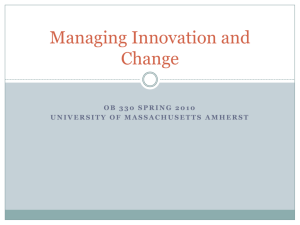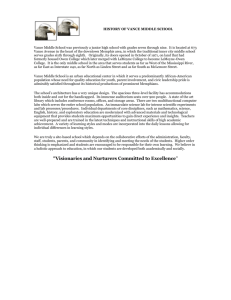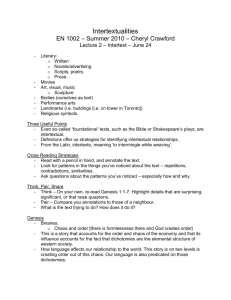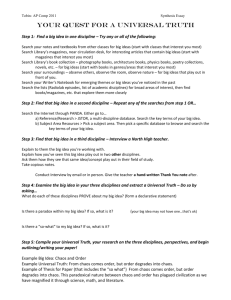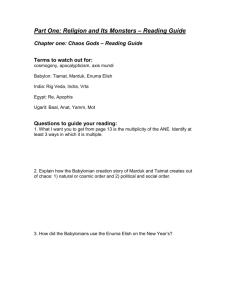Troy University Library List for MSM 6645. Update 8/4/2015, Dr
advertisement
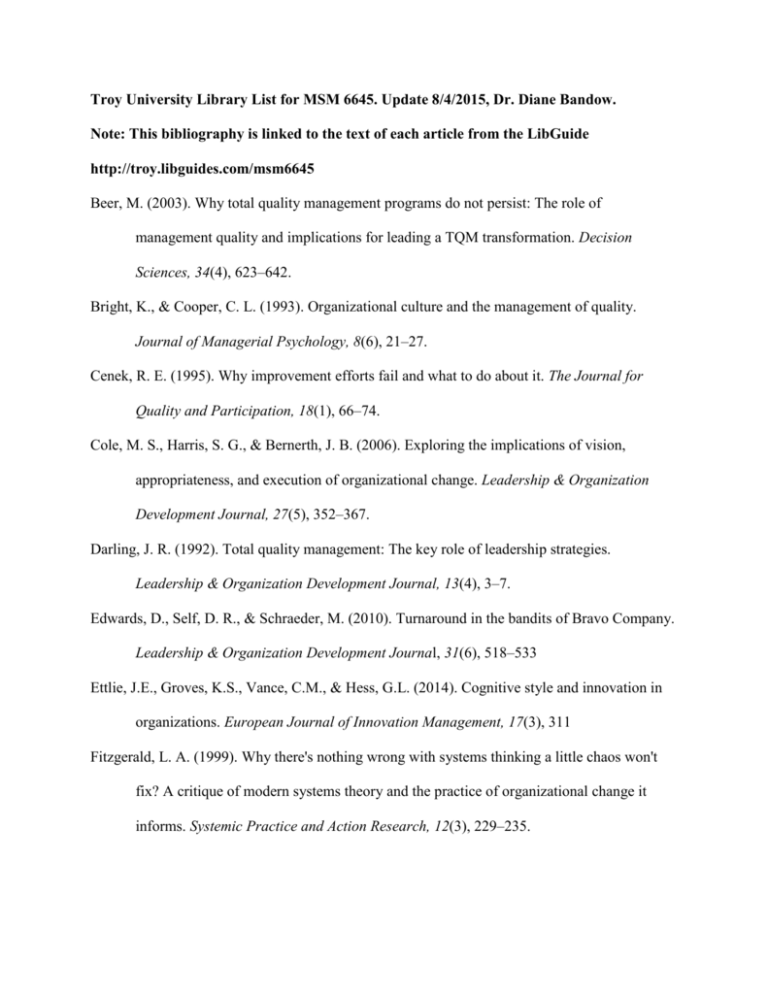
Troy University Library List for MSM 6645. Update 8/4/2015, Dr. Diane Bandow. Note: This bibliography is linked to the text of each article from the LibGuide http://troy.libguides.com/msm6645 Beer, M. (2003). Why total quality management programs do not persist: The role of management quality and implications for leading a TQM transformation. Decision Sciences, 34(4), 623–642. Bright, K., & Cooper, C. L. (1993). Organizational culture and the management of quality. Journal of Managerial Psychology, 8(6), 21–27. Cenek, R. E. (1995). Why improvement efforts fail and what to do about it. The Journal for Quality and Participation, 18(1), 66–74. Cole, M. S., Harris, S. G., & Bernerth, J. B. (2006). Exploring the implications of vision, appropriateness, and execution of organizational change. Leadership & Organization Development Journal, 27(5), 352–367. Darling, J. R. (1992). Total quality management: The key role of leadership strategies. Leadership & Organization Development Journal, 13(4), 3–7. Edwards, D., Self, D. R., & Schraeder, M. (2010). Turnaround in the bandits of Bravo Company. Leadership & Organization Development Journal, 31(6), 518–533 Ettlie, J.E., Groves, K.S., Vance, C.M., & Hess, G.L. (2014). Cognitive style and innovation in organizations. European Journal of Innovation Management, 17(3), 311 Fitzgerald, L. A. (1999). Why there's nothing wrong with systems thinking a little chaos won't fix? A critique of modern systems theory and the practice of organizational change it informs. Systemic Practice and Action Research, 12(3), 229–235. Hodge, B., & Coronado, G. (2007). Understanding change in organizations in a far-fromequilibrium world*. Emergence : Complexity and Organization, 9(3), 3–15. Hurwitz, A. (1992). The transnational culture of quality. The Journal for Quality and Participation, 15(5), 74–79. Judge, W. Q., & Blocker, C. P. (2008). Organizational capacity for change and strategic ambidexterity. European Journal of Marketing, 42(9), 915–926. Losada, M., & Heaphy, E. (2004). The role of positivity and connectivity in the performance of business teams: A nonlinear dynamics model. The American Behavioral Scientist, 47(6), 740–465. Marcinkoniene, R., & Kekäle, T. (2007). Action research as culture change tool. Baltic Journal of Management, 2(1), 97–109. Matejka, K., Gates, L., & Brooks, L. (1993). The total quality journey: By invitation only? Management Decision, 31(5), 60–64. Maurer, R. (2011). Why do so many changes still fail? (part two). The Journal for Quality and Participation, 33(4), 33–34. Maurer, R. (2011). Why most changes fail. The Journal for Quality and Participation, 34(2), 17– 18. Morris, A., Fisher, T., & Crawford, J. (1997). Quality culture and the management of organization change. The International Journal of Quality & Reliability Management, 14(6), 616–636. Palaima, T., & Skarzauskiene, A. (2010). Systems thinking as a platform for leadership performance in a complex world. Baltic Journal of Management, 5(3), 330–355. Peters, P. (1993). The right quality tools are as good as a first rate map. The Journal for Quality and Participation, 16(6), 56–58. Reddish, J. J. (2004). The tipping point: How little things can make a big difference. Consulting to Management, 15(3), 59–60. Reger, R. K., Gustafson, L. T., Demarie, S. M., & Mullane, J. V. (1994). Reframing the organization: Why implementing total quality is easier said than done. Academy of Management Review, 19(3), 565–584. Schatz, M. (1997). Why we don't teach leadership in our MBA programmes. The Journal of Management Development, 16(9), 677–679. Shook, J. (2010). How to change a culture: Lessons from NUMMI. MIT Sloan Management Review, 51(2), 63–68. Skarzauskiene, A. (2010). Managing complexity: Systems thinking as a catalyst of the organization performance. Measuring Business Excellence, 14(4), 49–64. Svyantek, D. J., & DeShon, R. P. (1993). Organizational attractors: A chaos theory explanation of why cultural change efforts often fail. Public Administration Quarterly, 17(3), 339355. Uhlfelder, H. F. (1996). It's a new world out there. The Journal for Quality and Participation, 19(3), 26–34. van der Wiele, T & Brown, A. (2002). Quality management over a decade: A longitudinal study. The International Journal of Quality & Reliability Management, 19(5), 508–523. van Oosten, E.,B. (2006). Intentional change theory at the organizational level: A case study. The Journal of Management Development, 25(7), 707–717. Vance, C., Zell, D., & Groves, K. (2008). Considering individual linear/nonlinear thinking style and innovative corporate culture. International Journal of Organizational Analysis, 16(4), 232–248. Vinten, G. (1992). Thriving on chaos: The route to management survival. Management Decision, 30(8), 22–28. Washington, M., & Hacker, M. (2005). Why change fails: Knowledge counts. Leadership & Organization Development Journal, 26(5), 400–411. Weisbord, M. R. (1976). Organizational diagnosis: Six places to look for trouble with or without a theory. Group & Organization Studies, 1(4), 430–447. Wheaton, W. F., & Weimerskirch, A. M. (1989). The journey to total quality: A fundamental strategic renew. Business Forum, 14(2), 4–7. Winter, R. S. (1998). The quality journey: What I saw, what I heard, what I learned. Total Quality Management, 9(2), 379–386.

